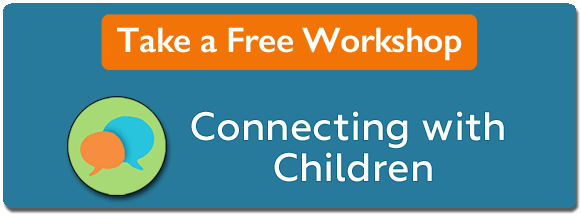
“Lisa is so different from Grace. Grace never broke anything when she was this age. Lisa breaks something every day,” Meg told me at our playgroup with our one-year olds.
Meg, a long-time friend, was over 30 when she had her first child. Five-year-old Grace lived up to her name. Grace was gentle and content to look at Meg’s extensive collection of family crystal and European figurines. Lisa, on the other hand, as soon as she could crawl, banged glass top tables and pulled expensive porcelain off shelves.
Meg and Dave’s antique-filled home was being assaulted and devalued daily by Lisa’s antics. Meg perceived it as misbehavior and was becoming increasingly short tempered with Lisa. Grace had not touched things. What was Lisa’s problem?
From information gleaned at a recent parenting class, I shared with Meg the idea of changing our children’s behavior using three maxims: Change our rules, change our environment, and change our attitude.
Change the rules to change behavior.
In Meg’s case, her rule was “Don’t touch mommy’s things.” Meg might have changed the rule to only touch objects with permission. Meg could have given lessons on how to handle a fragile object or how to look at an object using your eyes only, with your hands clasped firmly behind your back.
Change the environment to change behavior.
To most of us, it might be obvious that Meg needed to move her collectibles safely out of reach and get rid of her glasstop tables or put pads on them. Meg hadn’t thought of that solution since she had grown up with her mother’s extensive collection, and her older daughter hadn’t bothered items.
Change our attitude about the behavior.
Meg had perhaps an unrealistic perception of children and home décor. Meg could decide that some precious objects are going to get broken by children, and not to get upset about it. Or change her attitude to reflect Lisa’s behavior as normally curious. Meg might also change her attitude about how a house should look. With small children, we might have to forgo our vision of House Beautiful.
In hopes of giving her a few ideas, I invited Meg over to my house to see our child-friendly changes. Photos and unbreakable art objects were on the lower shelves of our bookcases and end tables. Our glass-topped tables had been removed.
Meg used a combination of these three maxims to change Lisa’s behavior. Meg changed the rules by taking time with Lisa and showing her how to handle a delicate object, and how to only look at an object. Instead of “Don’t touch,” Meg said, “Look.”
Meg changed the environment by putting objects out of Lisa’s climb and reach zone. Meg moved furniture and added child-friendly accessories of baskets, woodcarvings and quilts, so that Lisa could practice her skill at handling objects carefully.
Meg also changed her attitude. She realized that Lisa was very different from her and needed more exploration, movement and training in order to be comfortable in the house. Meg realized that her relationship with her daughter was more important than her collections, and packed most pieces away.
When Meg changed her rules, her environment and her attitude, Meg and Dave’s home became peaceful, and Meg enjoyed her time with both Lisa and Grace.

